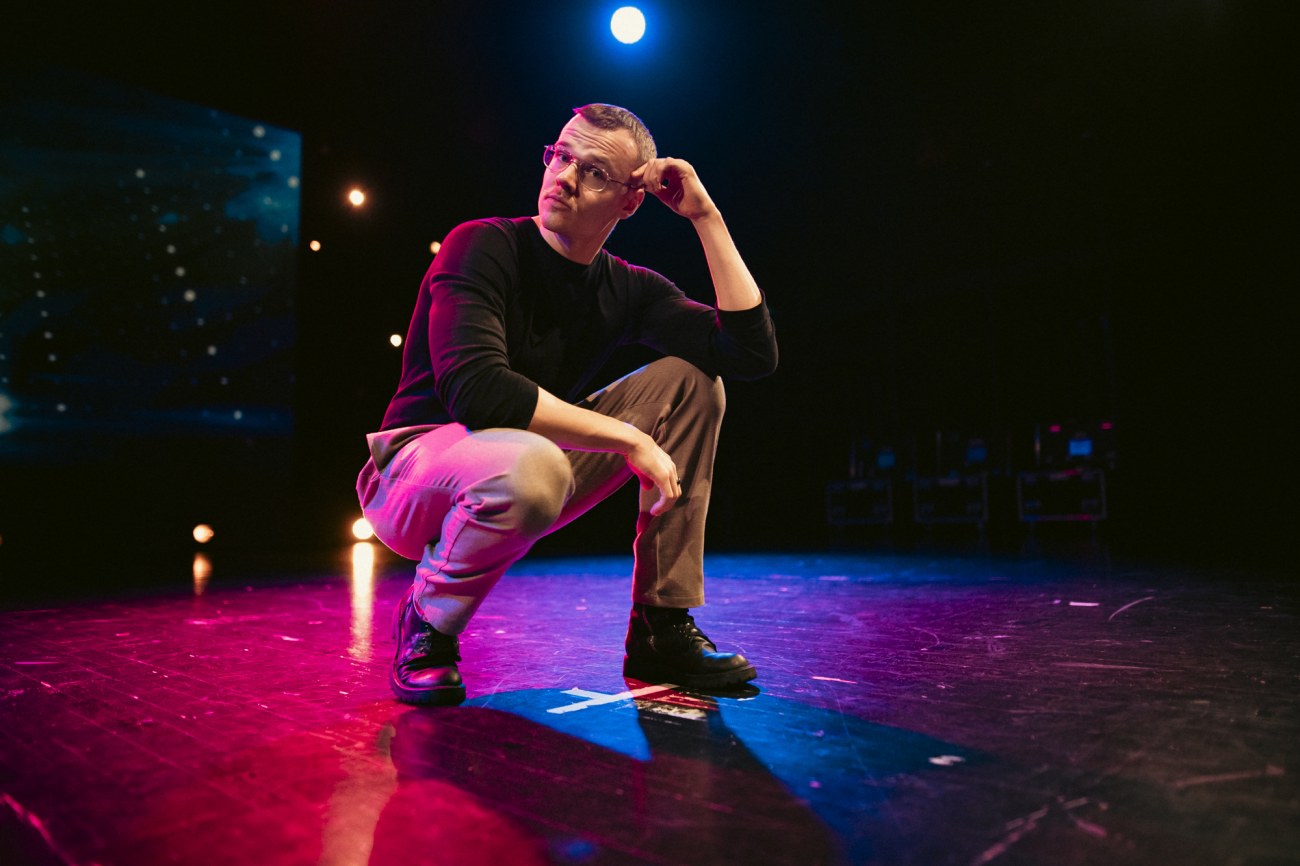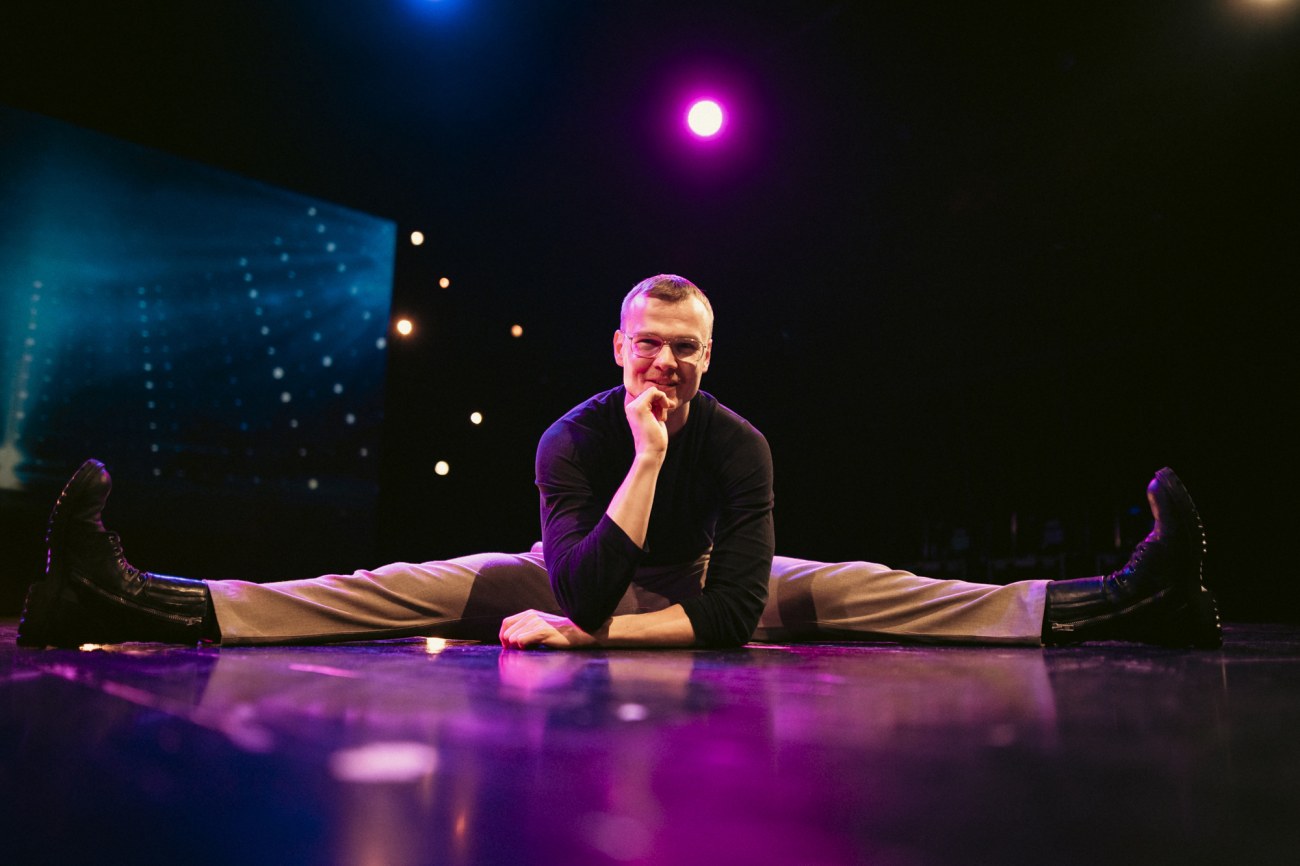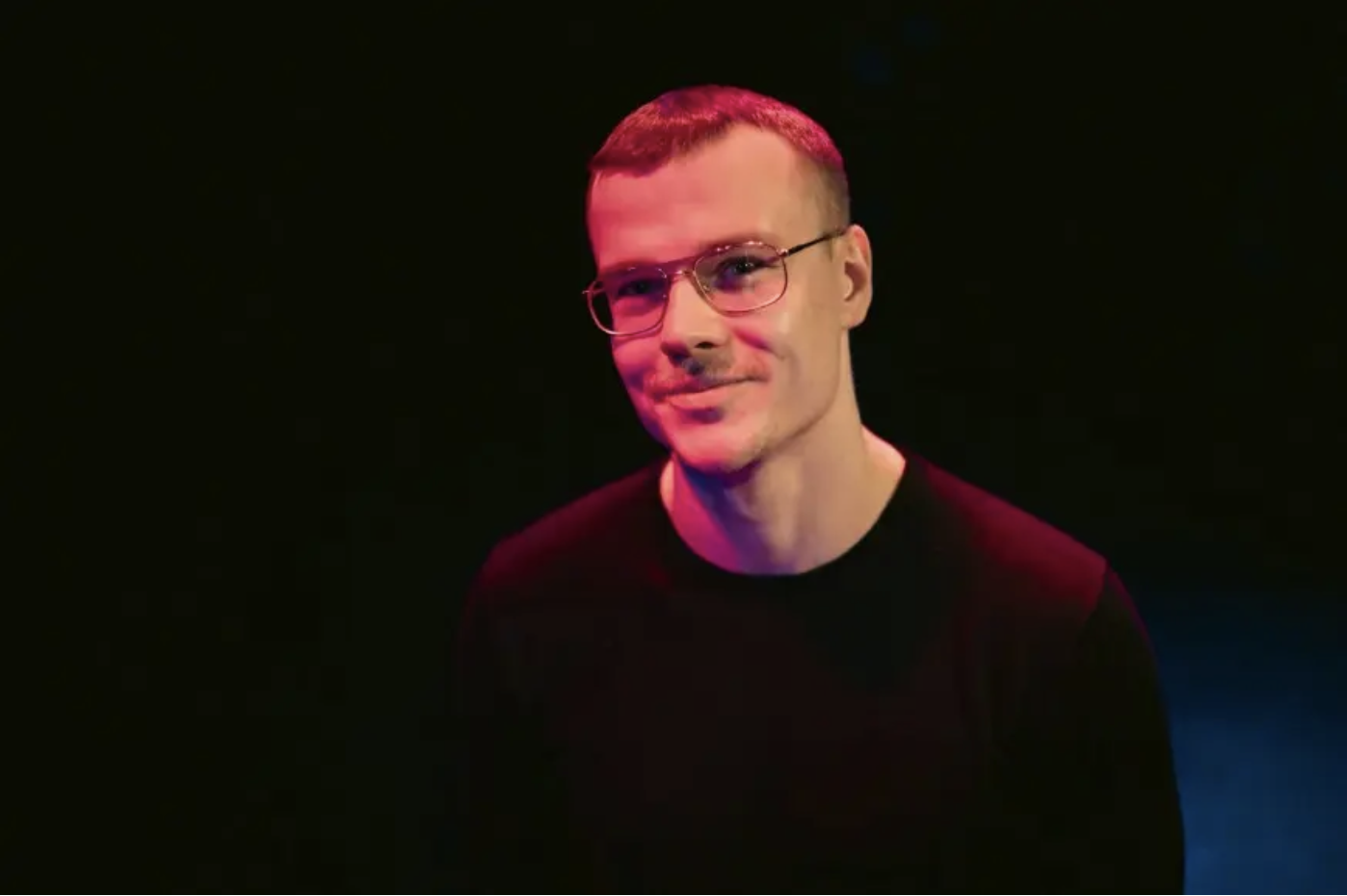The actor works with a wide range of technologies, from multi-camera productions and the theatre stage to telepresence rehearsals. “I have noticed how much an actor has to adapt his physicality to different technological conditions,” says Samuel Kujala, an actor hailing from Tampere.
This observation led him to ask a fundamental question: If a human can act like a machine, could a machine be programmed to act like a human, or could the two function together as part of a continuous feedback loop?
Seeking answers to these questions led Kujala, a Master of Theatre Arts from Tampere University, to become a doctoral researcher in the CONVERGENCE of Humans and Machines project. This multidisciplinary project focuses on exploring new dimensions in human-technology interaction.

In acting, technology is often seen as restrictive. Kujala offers an example: “A film actor always has to control their performance according to the technology.” However, Kujala believes that technology can also inspire an actor’s imagination and creativity. “I want to dispel the myth that an actor has to exclude technology in order to perform well,” he explains.
Kujala’s research project blends artistic practice with technological research. He aims to develop acting techniques that foster a more productive, symbiotic relationship with technology. “When technology is capable of interpreting even involuntary signals from its user, issues of control and surrender become strikingly acute,” Kujala says. His research pushes the boundaries of this relationship, using technologies such as machine vision, augmented reality, and muscle stimulation.
The actor-technology relationship is pushed to its limits, put on steroids – right up to the skin and even beneath it.
Kujala believes that there is room and potential for the two-way interaction between humans and technology to evolve in a more frictionless, integrated and embodied direction. “In contrast, with regard to algorithmic systems that control crowds, I would hope that the friction between the user and the system would even increase and that the moments of conscious deliberation would be retained by the users.”
The multidisciplinary environment of the CONVERGENCE project offers Kujala the opportunity to combine two distinct fields of research. “It’s enlightening to have to articulate the fundamentals of acting to someone from a completely different background. At the same time, it’s incredibly helpful to get clear answers to technical questions that might be second nature to experts in those fields,” Kujala reflects.
The CONVERGENCE research setting allows for a deeper exploration of the intersection between acting and technology, while also creating new possibilities for the future of performance art.
Kujala believes that his work may also have wider applications. “Through my artistic experiments, I hope to expand the horizon in which multimodal and embodied interfaces are imagined and designed.”
 Photo: Antti Yrjönen
Photo: Antti YrjönenEach CONVERGENCE doctoral researcher has two main supervisors. The main supervisors of Kujala are Pauliina Hulkko (Theatre Arts) and Jukka Vanhala(Electronics), and the other supervisors are Davide Giovanzana (Theatre Arts), Ismo Rakkolainen (Computing Sciences), Mikko Kanninen (Tampere Theatre) and Esa Kirkkopelto (Theatre Arts).

